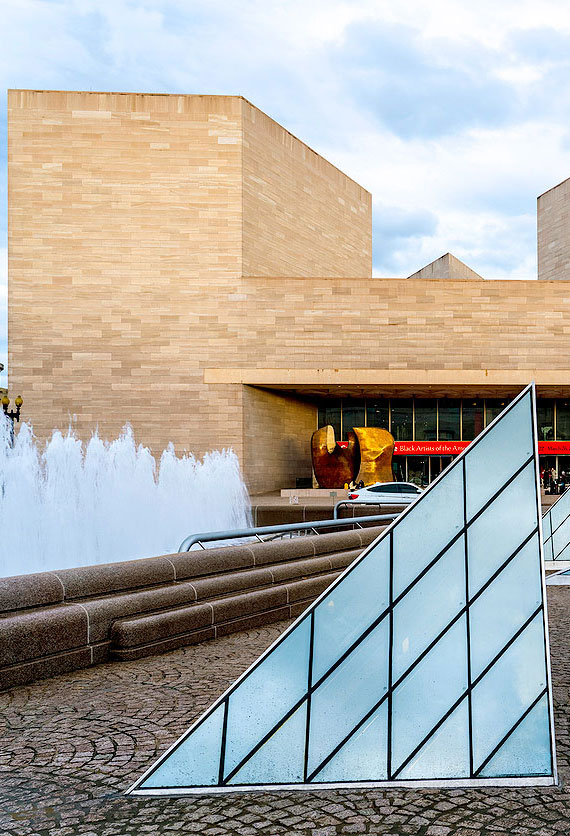With vast collections of ancient artifacts, history museums offer us a fascinating glimpse into the past. There is perhaps no better opportunity to learn about the storied histories of bygone civilizations than by experiencing these meticulously curated exhibits firsthand. From the Americas to Europe and Asia, explore six of the largest history museums around the world.
National Museum of Anthropology – Mexico City, Mexico
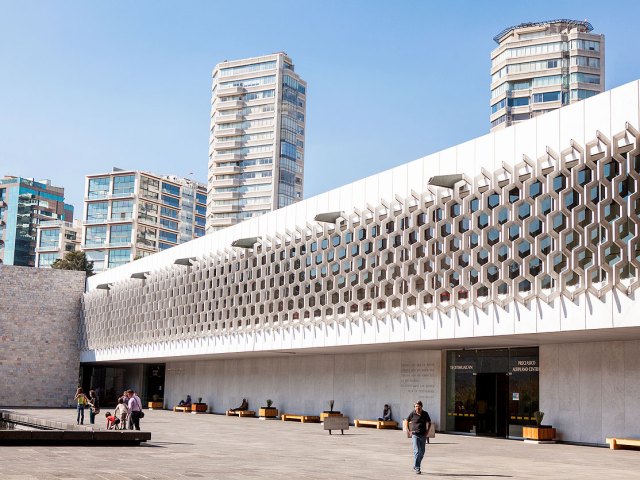
Known locally as the Museo Nacional de Antropología, this Mexico City institution showcases the vast anthropological and archeological history of Mexico, including the world’s largest collection of ancient Mexican art. Located in the Bosque de Chapultepec park — the oldest and largest urban park in Latin America — the museum spans an area of nearly 20 acres, with over 80,000 square feet of interior space spread over 23 exhibition halls. The National Museum of Anthropology was founded in 1825 and acquired its current name in 1939. In 1964, the museum moved to its current building, which is renowned for its striking architecture — including a massive concrete water feature in the center courtyard known as El Paraguas (“The Umbrella”).
Some of the highlights among the museum’s approximately 600,000 exhibits include a 22-ton Aztec “Sun Stone,” as well as a “Group of Figures,” which are human-like relics from the indigenous Olmec peoples. The museum also features a replica of the tomb of famous Maya leader K’inich Janaab Pakal I, who reigned over the empire from 615 to 683 CE.
The British Museum – London, England
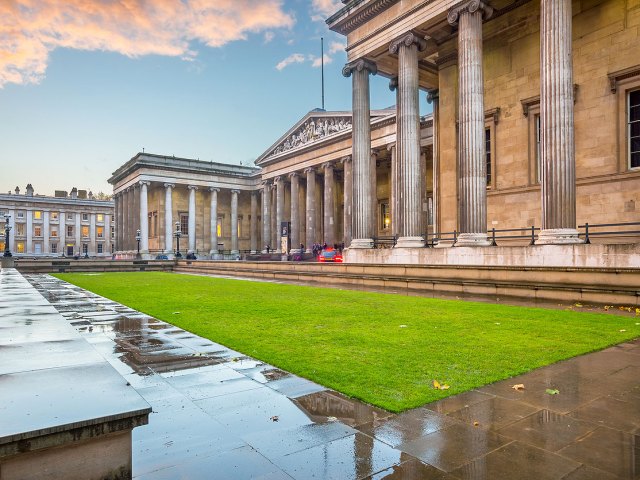
The British Museum, located a few blocks north of the River Thames in downtown London, occupies 990,000 square feet of exhibition space, which contains upwards of 100 individual galleries. Founded in 1753 and opened six years later, the museum has since increased its collection to such a vast size that it has since opened two other museums to house its wide array of artifacts: the Natural History Museum and the British Library.
Approximately 6.5 million annual visitors come to the British Museum to gaze upon its expansive collection of over 8 million objects. (About 80,000 individual items — representing just 1% of the collection — are on display at any given time.) The museum not only highlights British history, but also world history, showcasing historic objects from ancient Sumeria, Assyria, Egypt, and Greece, among other civilizations. Highlights include the Rosetta Stone — the famous slab dating to 196 BCE that helped to decipher ancient Egyptian hieroglyphs — a collection of 2,500-year-old sculptures from the Greek Parthenon, and a 7.5-ton bust of Egyptian pharaoh Ramesses II.
The Smithsonian Institution – Washington, D.C.
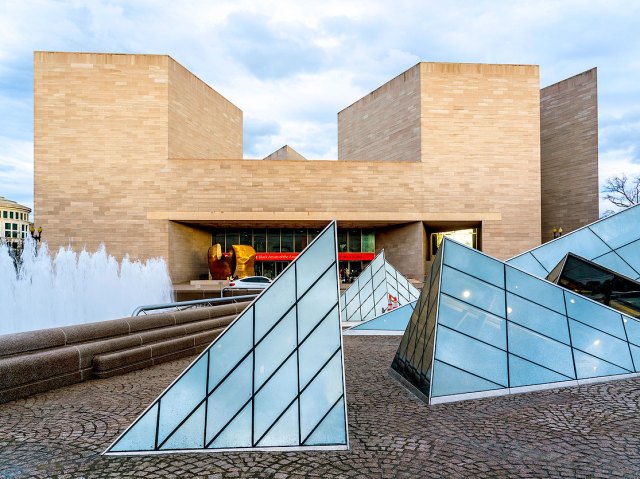
The Smithsonian Institution is the umbrella organization that operates and oversees 19 history museums and galleries, plus nine research facilities throughout the D.C. area. Popular Smithsonian exhibitions include the National Air and Space Museum, the National Portrait Gallery, and the National Museum of American History. All told, the Smithsonian’s facilities encompass a total area of over 2.87 million square feet — making it the world’s largest museum, education, and research complex. The Smithsonian Institution Building — aptly nicknamed “The Castle” — is the organization’s signature building. Made of red sandstone, it opened in 1855, once served as an archive, and now houses the organization’s administrative offices.
Some of the Smithsonian’s highlights include the many animal-themed exhibits at the National Museum of Natural History, where visitors can learn about the ecology of African elephants, gaze upon dinosaur fossils, and walk through a hall of mammals from around the world. The Smithsonian also houses historic artifacts from the world of television and film at its National Museum of American History, including the ruby slippers worn by Judy Garland in 1939’s The Wizard of Oz, an original Kermit the Frog puppet, the Lone Ranger’s felt mask, and around 50,000 archival sound recordings dating to 1903.
National Palace Museum – Taipei, Taiwan
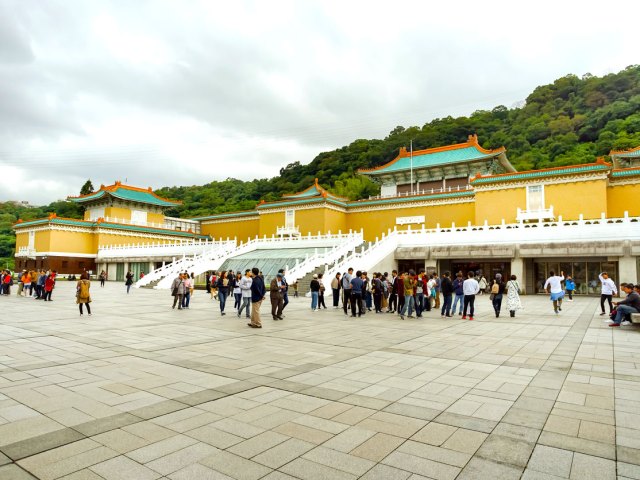
Taiwan’s National Palace Museum features one of the world’s greatest collections of ancient Chinese sculpture and art, chronicling centuries of history that span the course of many bygone dynasties. The museum contains an estimated 538,000 square feet of interior space, as well as more than 170,000 square feet of surrounding gardens and foot paths. This Taipei-based museum was formed in 1965, combining the collections of Taiwan’s previous National Palace Museum with several other collections, including ancient artworks previously housed in Beijing.
The museum showcases approximately 6,000 pieces of the 650,000 objects that make up the entire collection at any given time, meaning it takes 12 years to display every artifact (they are regularly changed every three months). Some of the National Palace Museum’s exhibits date back 5,000 years; among those many treasures, visitors can gaze upon sculptures and artifacts from the Song, Yuan, Ming, and Qing imperial collections.
National Museum of Natural History – Paris, France

Founded in 1793, France’s Muséum National d’Histoire Naturelle (National Museum of Natural History) is located in Paris’s 5th arrondissement and consists of four main spaces: a rose and vegetable garden (the Jardin des Plantes), a gallery dedicated to evolution (the Grande Galérie de l’Évolution), an outdoor zoo area with over 1,000 species of animals (the Ménagerie), and a series of greenhouses (the Grandes Serres) that highlight plants from different climates. In total, the museum covers just over 56 acres.
Visitors are also drawn to the stunning architecture found throughout the Muséum National d’Histoire Naturelle, such as the 10,700-square-foot glass ceiling that tops the Grande Galérie de l’Évolution. This massive ceiling illuminates the many fossils and taxidermied creatures that are exhibited throughout the gallery’s 65,000 square feet of space.
American Museum of Natural History – New York, New York
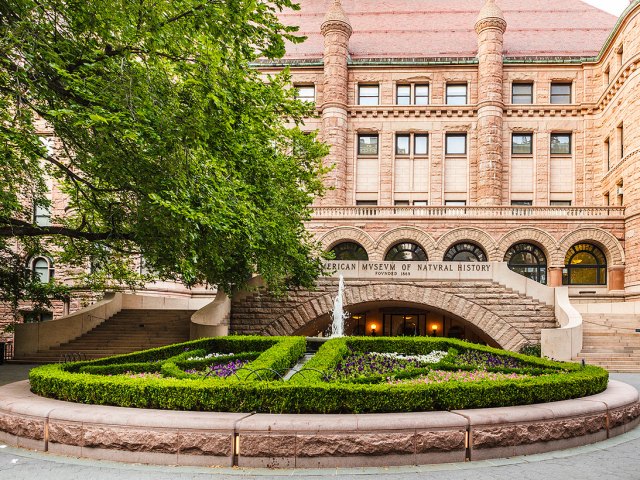
Located at the western end of Central Park on Manhattan’s Upper West Side, the American Museum of Natural History was founded in 1869. Today, the museum is made up of 25 interconnected buildings that encompass four entire city blocks and 2 million square feet of exhibition space, enough to house the institution’s incredible collection of over 33 million specimens.
One of the most popular exhibits is the collection of dinosaur bones located on the main building’s top floor. The centerpiece of these ancient relics is a Tyrannosaurus Rex fossil that was discovered in Montana in 1908 before making its way to New York City; its massive skeleton featuresa four-foot-long jaw and six-inch-long teeth. The T. Rex isn’t the biggest exhibit in the museum’s collection, however — that honor lies with a realistic blue whale model suspended over one of the exhibition halls. Based on photographs from 1925, the model was constructed in the mid 1960s. The final result is a 94-foot-long whale composed of foam and fiberglass that weighs 21,000 pounds.
More from our network
Daily Passport is part of Optimism, which publishes content that uplifts, informs, and inspires.






